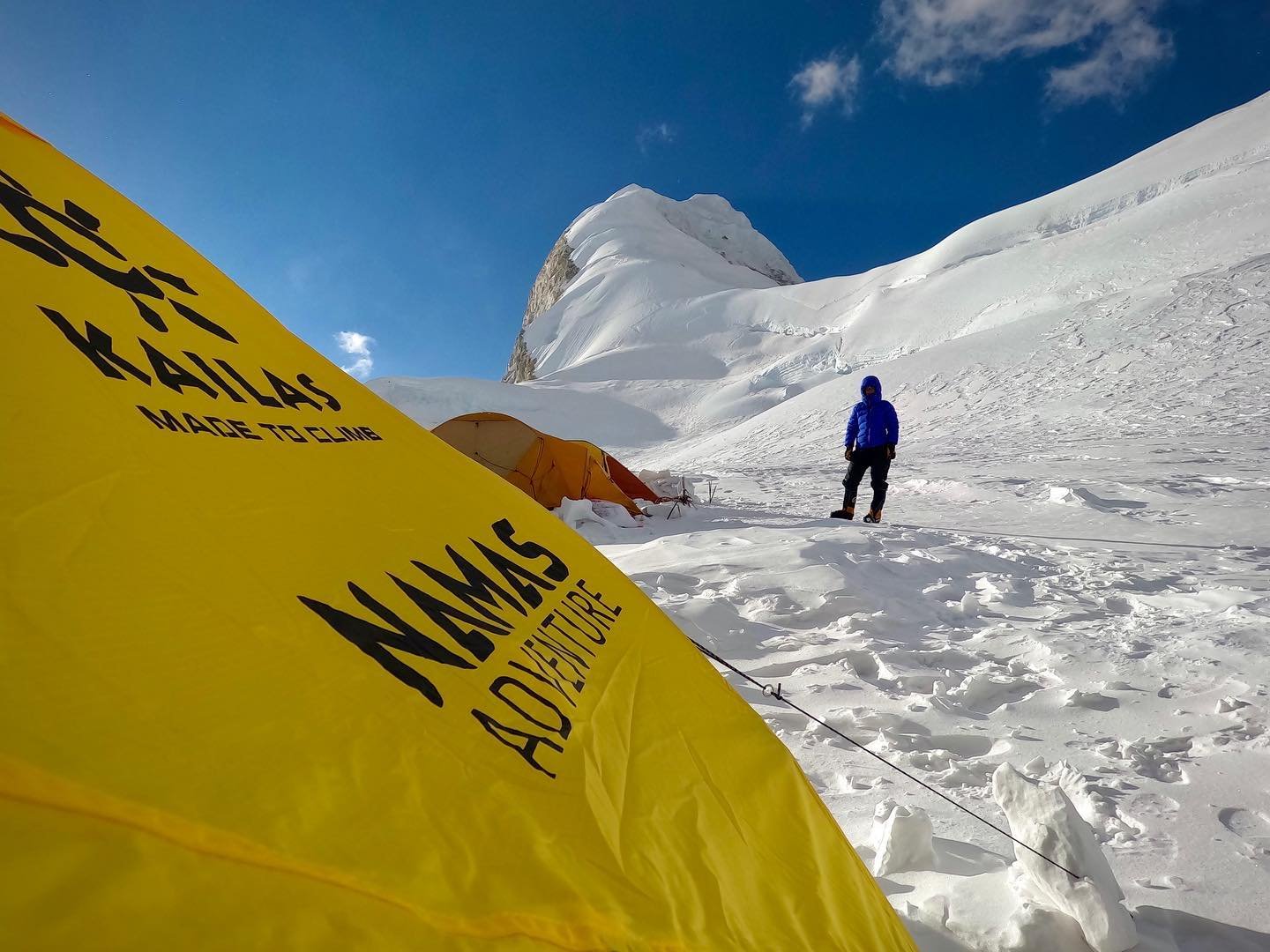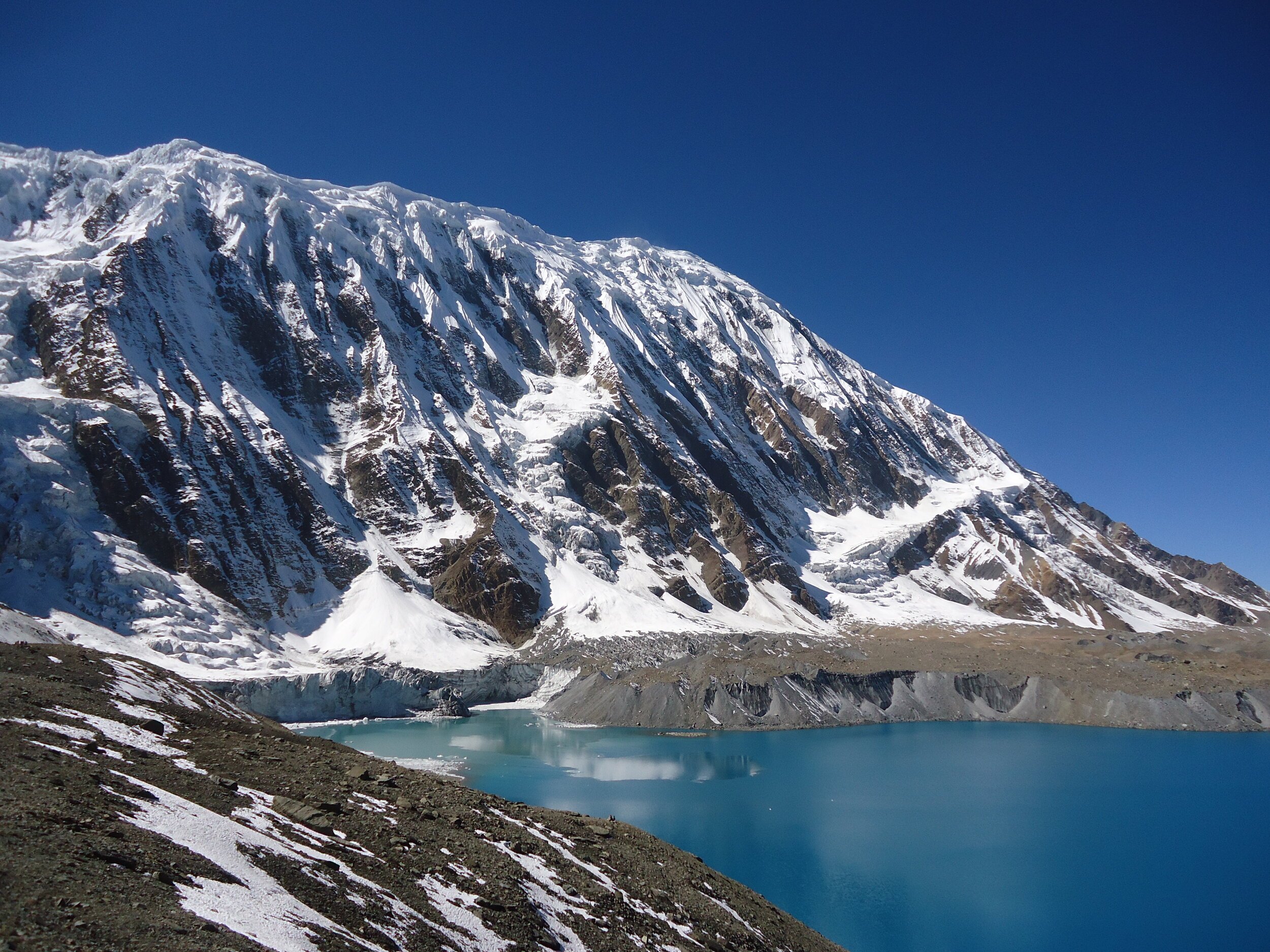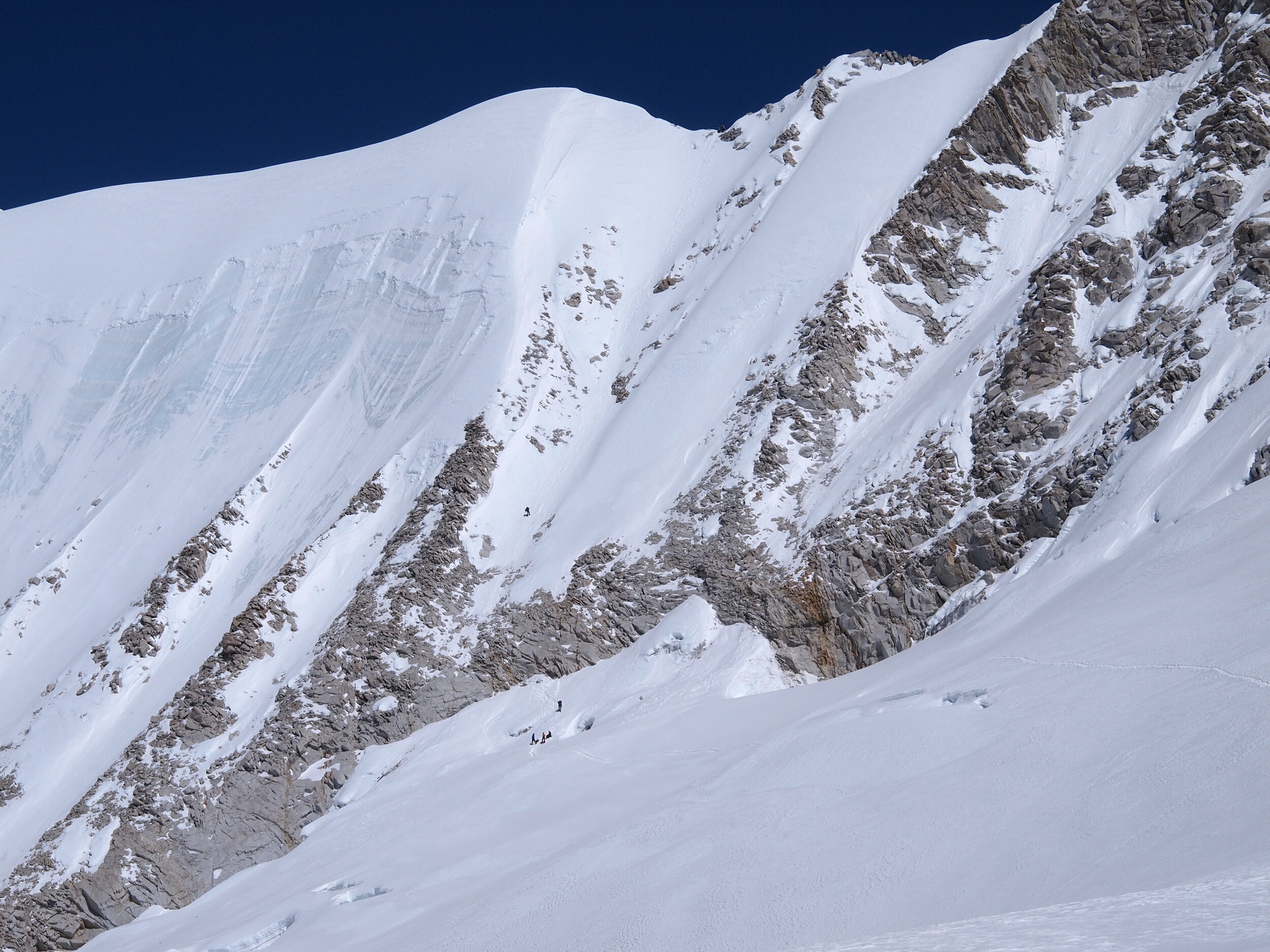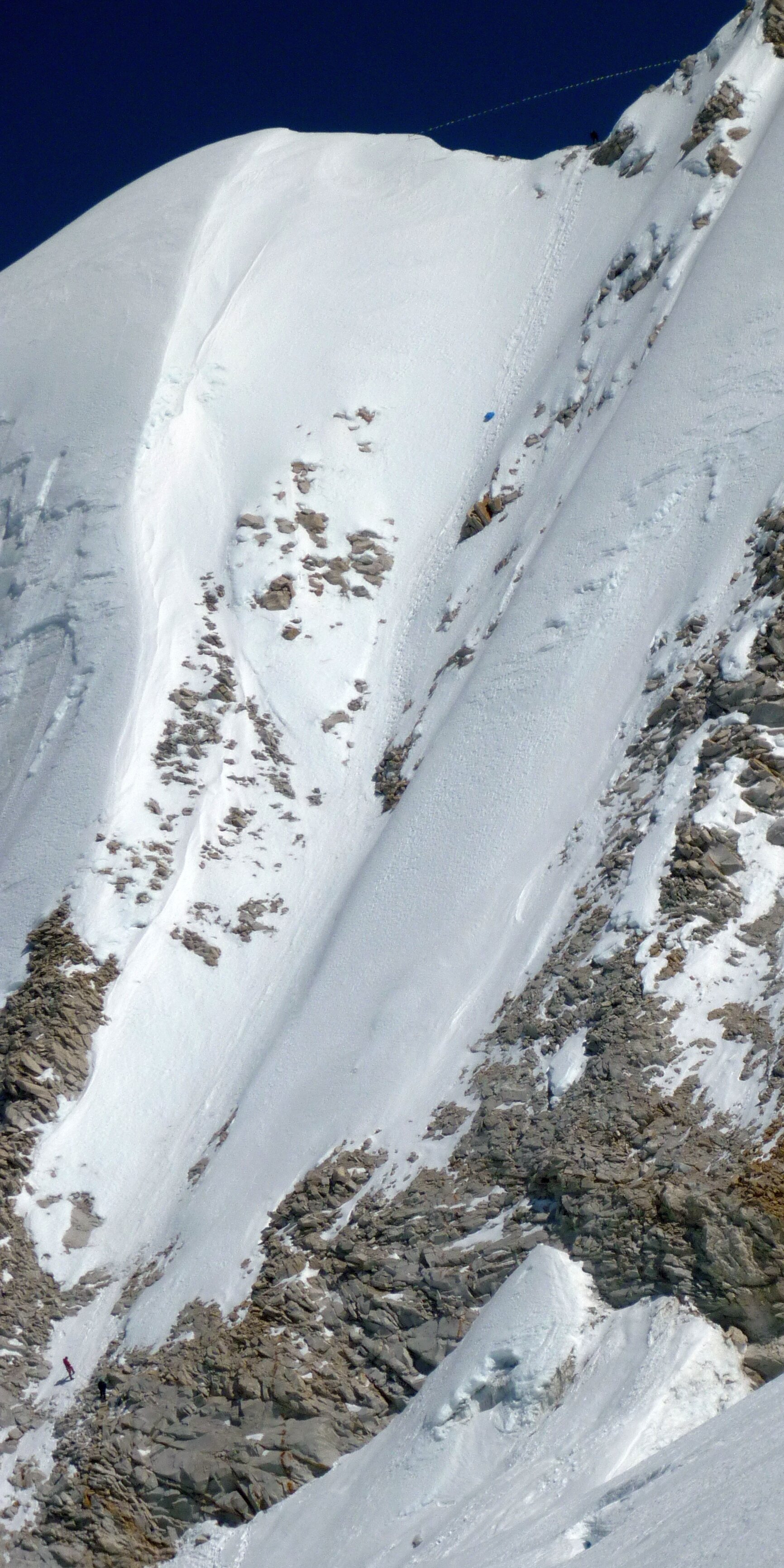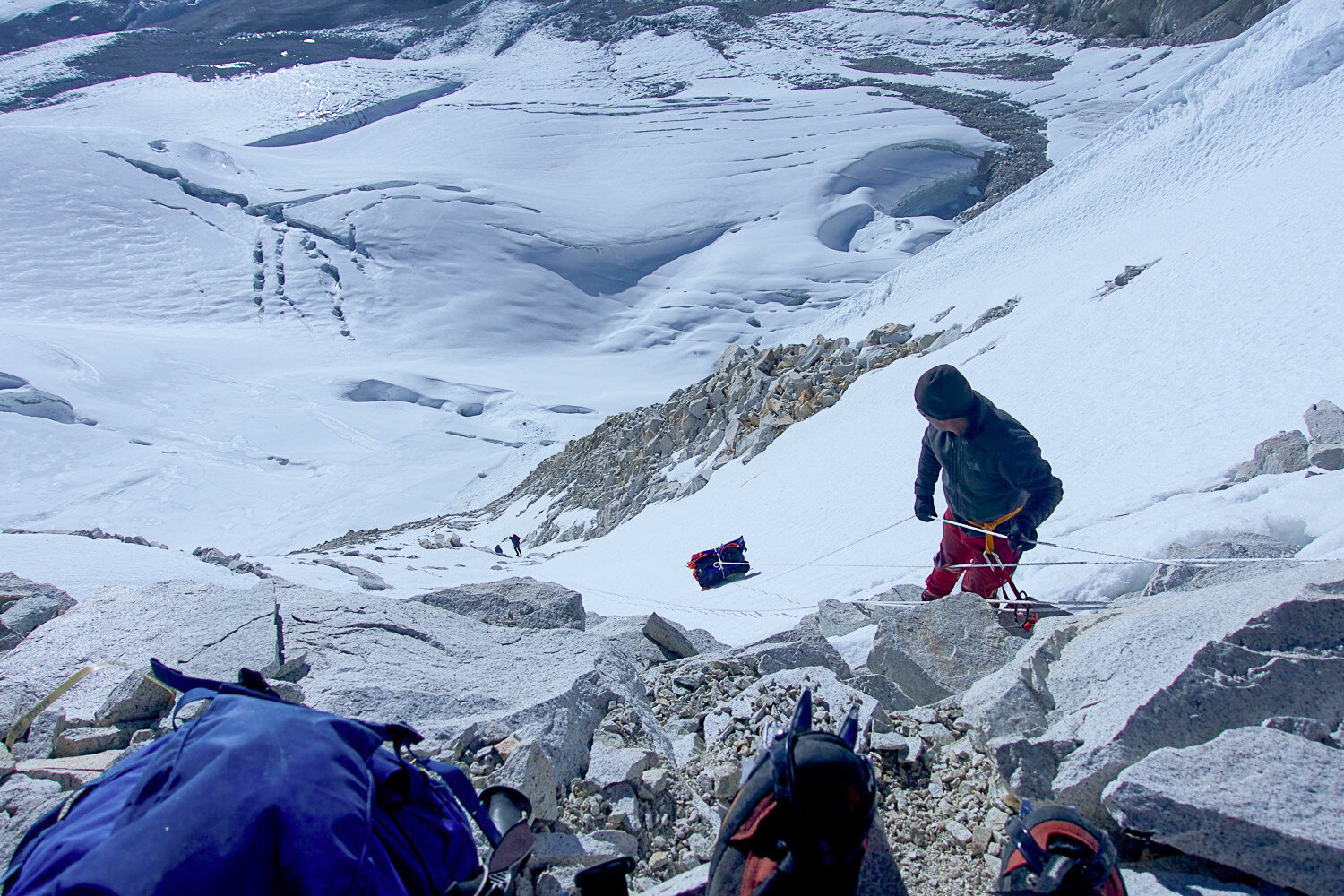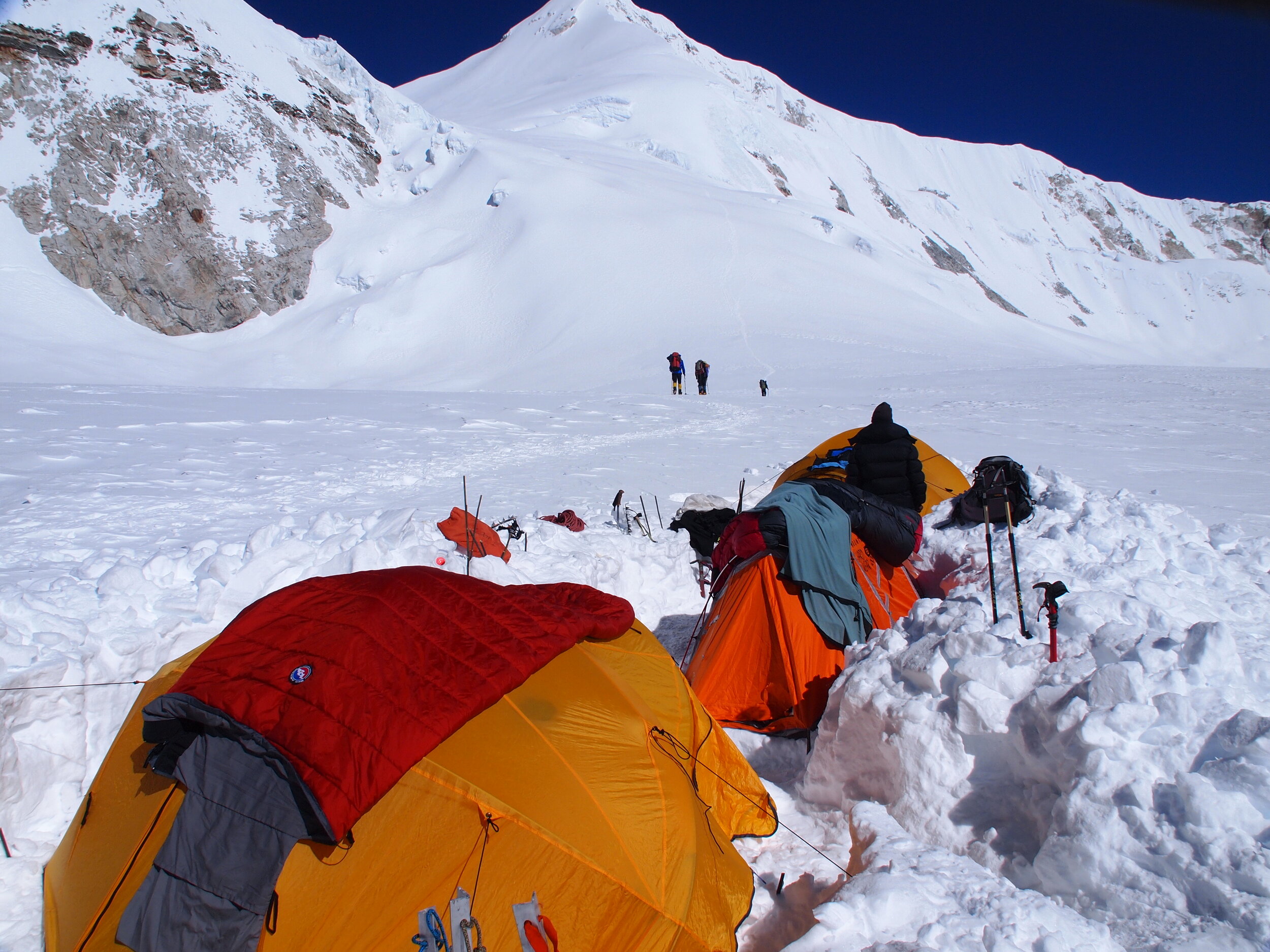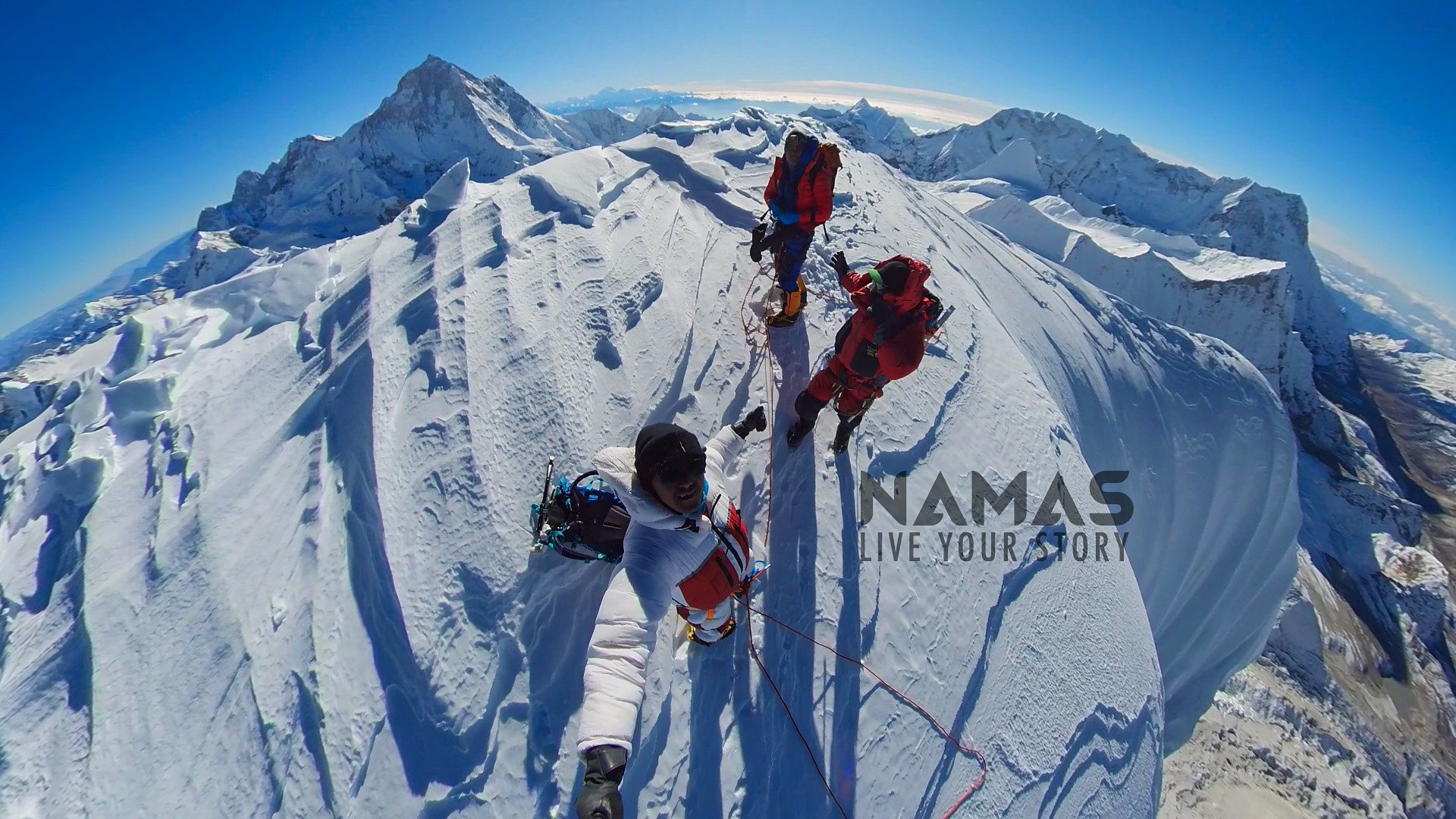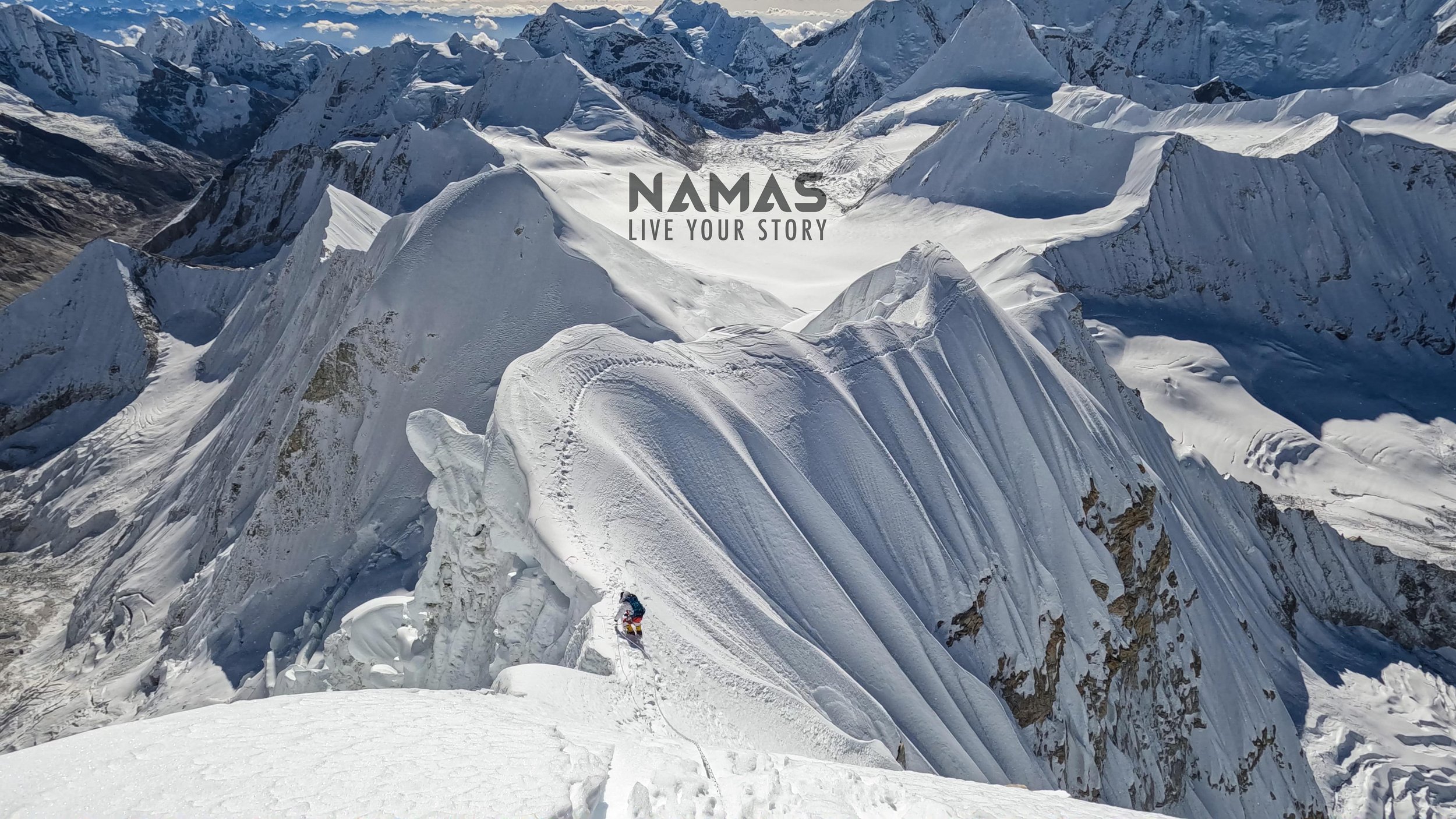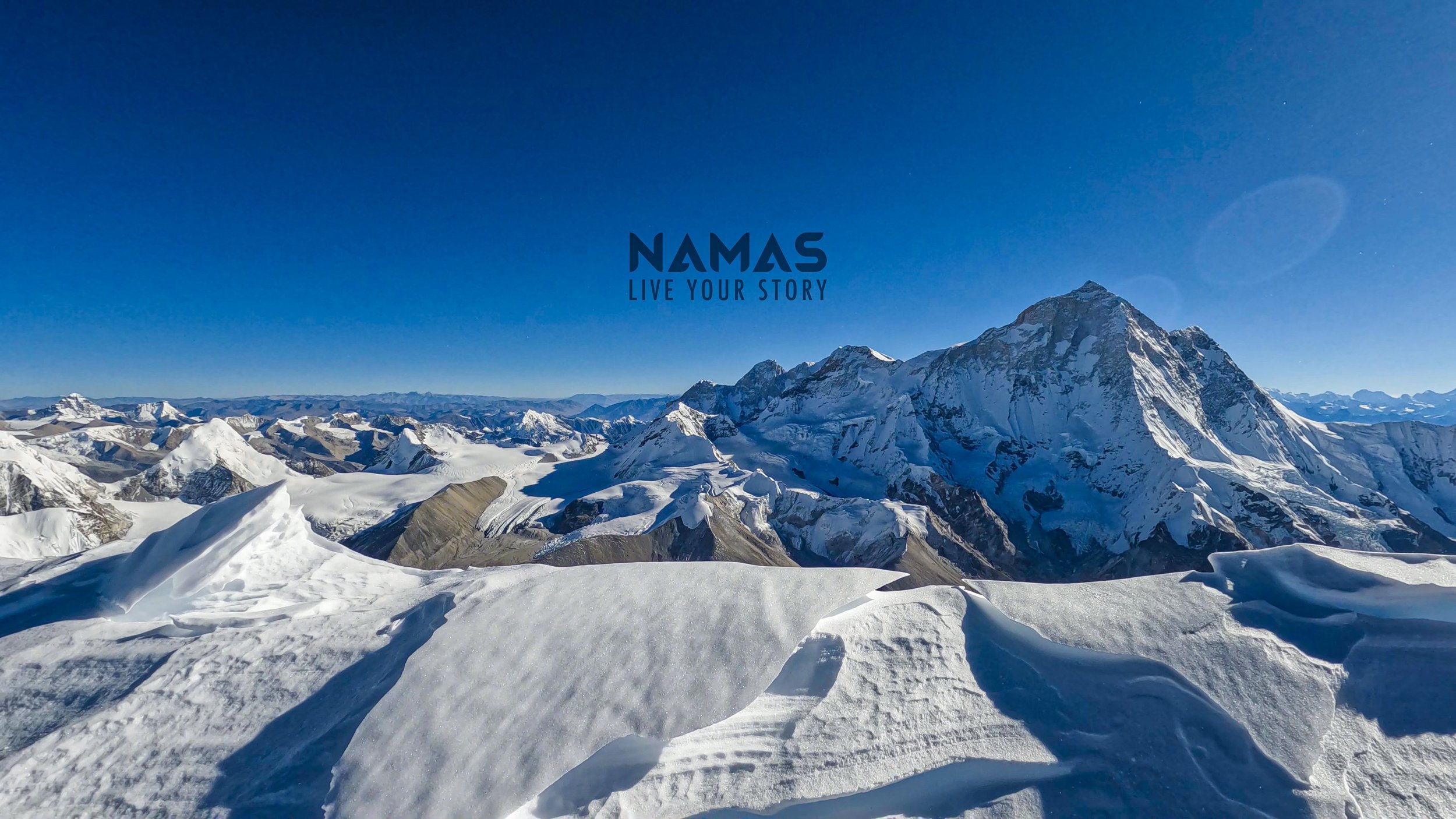Intermediate level 7000M+ Mountaineering Expeditions - Namas Adventure
In this article, we aim to introduce you to the thrilling world of 7000-meter intermediate-level expeditions. These remote climbs offer a unique blend of adventure, challenge, and joy, with fewer summits compared to their higher counterparts. A perfect mission for intermediate-level climbers, these expeditions provide an exciting opportunity to push your limits and conquer towering peaks. While 7000-meter peaks may not boast the same bragging rights as 8000-meter summits, they offer a special experience for those who seek pure joy in thin-air alpine challenges and push themselves to extreme altitudes. Whether you're testing your skills or simply marveling at the wonders of nature, embarking on a 7000-meter expedition promises an exhilarating journey filled with excitement and achievement. Below, we'll explore some of the best intermediate-level 7000M peaks that we've had the privilege of exploring, providing you with valuable information to help you plan your next adventure. We look forward to the opportunity to serve you on any expedition you choose to embark on.
Note - We will continue to expand and update our list of peaks as we explore more 7000-meter peaks in the years to come.
First on the list for intermediate 7000-meter-plus peak is Mount Baruntse. Standing at 7129 meters, Baruntse is conveniently located between the Khumbu region and the towering peak of Makalu (8646m). Mera Peak (6476m) serves as an excellent acclimatization peak before tackling Baruntse, and it can also be accessed via the Ampahu Lhabtas pass (5800m). The climb itself involves setting up two high alpine camps, with relatively fewer objective dangers, offering climbers a high success rate. Most successful summit attempts occur during the autumn season climb.
Pre-requisite requirements include climbing experience on peaks such as Lobuche East and Island Peak, Chulu West, Khumbu Three Peaks or Annapurna Three Peaks, Alpamayo, Mont Blanc, Zermatt, or other similar-grade mountains. These experiences will help prepare climbers for the challenges of Mount Baruntse.
Be ready for a very cold base camp.
Tilicho Peak, standing at an impressive 7134 meters, presents a thrilling yet fulfilling challenge for climbers seeking technical ascents in the 7000-meter peak range. The journey begins with a scenic trek through the Annapurna circuit, leading to the stunning Tilicho Lake, the highest lake in the world at an elevation of 4910 meters.
Located north of Manang in the Annapurna Region, Tilicho Peak boasts a majestic northeast ridge covered in snow, offering panoramic views of the high Kali Gandaki valley to the west and the Marshyangdi Valley to the east. Nearby lies the mystical land of Mustang to the north.
To undertake this adventure, climbers should meet certain prerequisites, such as experience on peaks like Alpamayo, Khumbu Three Peaks, or Annapurna Three Peaks, Himlung Himal and have mixed climbing grade 2-3 or ice climbing experience WIII-IV.
The standard climbing route follows the northwest shoulder, with Base Camp situated at 4800 meters at the lake's northwest end. With fewer climbers in the Annapurna mountain range, adventurers can enjoy the breathtaking landscape almost exclusively to themselves.
KHAN TENGRI 7439M
Khan Tengri 7439M, is located in Kazakhstan (highest peak). This breathtaking mountain falls on the Tien Shan mountain range of Central Asia (boundaries between Kazakhstan, Kyrgyzstan, and the Uygur Autonomous Region of Xinjiang, China), Khan Tengri offers an exhilarating challenge for intermediate climbers seeking an unforgettable adventure.
Pre-requisite requirements for this expedition include, Lobuche East & Island Peak, Khumbu 3 Peak or Annapurna 3 Peak, Alpamayo, Himlung Himal or expeditions with similar grades
Climbing Khan Tengri presents a unique set of challenges, blending technical skill with physical endurance. This expedition is also known for gaining altitude rapidly and objective dangers of avalanches are higher too making it one of the peaks with at least 7000M summits with the amount of climbers at the peak each season. Aspiring climbers should expect to navigate steep slopes, crevasses, and changing weather conditions. The weather in Khan Tengri is known for its notorious nature and is unpredictable, with temperatures dropping drastically and strong winds posing additional obstacles. However, with proper preparation and guidance, climbers can overcome these challenges and reach the summit.
Conclusion
Embarking on a 7000-meter intermediate expedition is a journey filled with challenge, adventure, and personal growth. Each of these peaks presents formidable sets of mixed challenges, combining technical prowess with classic mountaineering skills, all while demanding both physical and mental resilience. From the towering peaks of Baruntse to the technical ascents of Tilicho Peak, every expedition offers climbers the opportunity to push their limits and conquer remarkable heights.
As we continue to explore more peaks and expand our experiences, we eagerly anticipate sharing more adventures with you. Whether you're drawn to the thrill of high-altitude climbing or simply captivated by the beauty of the world's tallest mountains, there's an expedition waiting for you.
We embark on select peaks yearly and would be honored to have the chance to take you on one of these remote and less summited expeditions. Together, we can create unforgettable memories and face the challenge of the mountains, discovering just how far you can push yourselves and leveling up for even greater adventures. Dream big, prepare diligently, and let's make this climb together.
Let's go, LIVE YOUR STORY
Best 7000M+ peaks to climb in Nepal - Namas Adventure
Near the summit of Annapurna IV 7525M
Although 7000M peaks do not have the same level of prestige as 8000M peaks or the highest peaks in the world, they can still be a great challenge for adventure seekers. While these peaks may not be as well-known as their higher counterparts, they offer a unique and rewarding experience for climbers. 7000-meter peaks are ideal for those who are seeking a true adventure challenge, and who are motivated by a love of climbing, cultural immersion, and personal accomplishment. If you are one of these passionate climbers, consider embarking on a mountaineering expedition to one of the six 7000er peaks in Nepal listed in this post. These peaks offer a chance to push your limits and achieve something truly remarkable.
Below we have listed 6 amazing and remote peaks to climb in the Nepalese Himalayan range.
Note - Prior experience of alpine or mountaineering climb above 4000+M - 6000M+ is a must. Skill and fitness requirements will vary from different mountain peak objectives.
1. Himlung Himal 7126M (Least difficult & least technical 7000er)
Altitude: 7126M / 23,379ft
Climbers’ experience level: Intermediate/Advanced
Crowd level: Minimum (Spring, 5-20), Moderate (Autumn, 50 - 150)
Location: Annapurna Region
When to climb?: September - October
Duration: 30 Days
Difficulty grading: AD+/4 (Alpine/Fitness grading info)
Accommodation: Lodges and Base camp, Camp 1/2/3
Himlung Himal, standing at 7126 meters, is widely considered to be one of the safest and easiest 7000 meter peaks to climb in Nepal. Thanks to new, safer routes pioneered by French and Swiss climbers, Himlung Himal may become more accessible to climbers seeking a less technically demanding experience in western Nepal. The peak was not climbed until 1992, when it was conquered by a Japanese expedition, due to the fact that the area was not open to foreigners until the early 1990s. Located between the Manaslu and Annapurna ranges, the base camp for Himlung Himal is set up at an elevation of 4900 meters. The previous route up the peak, via the northwest ridge, has become increasingly prone to avalanche danger. A new, normal route was pioneered in 2013 by Kari Kobler of Switzerland, which offers an interesting and relatively short climb with limited objective danger. This route ascends the south flank of the northwest ridge to reach the upper crest, bypassing the previous route.
Note - Himlung Himal 7126M has the most successful summit records amongst all the 7000M+ commercial expeditions in Nepal. (Himalayan Database)
The Himlung Himal climbing expedition involves establishing 2-3 high camps at elevations of 5430 meters, 6000 meters, and 6300 meters. The summit day involves an ascent of 1100 meters through snow slopes with an angle of 40-45 degrees, requiring good snow conditions. Deep snow can pose a challenge even for strong teams. The climb is technically simple and objectively safe, making it an ideal preparation for your first 8000 meter peak.
History: First Ascent by the Japanese team in 1992.
Climb - Himlung Himal Link
2. Baruntse Peak 7129M (intermediate level and demanding)
Altitude: 7129M/ 23,389 ft
Acclimatization peak: Mera Peak 6476M
Climbers experience level: Intermediate level Experience
Crowd level: Minimum (Autumn, 15 - 40 climbers)
Location: Makalu Barun National Park
When to climb?: March-May or September - November
Duration: 32 - 35 Days
Difficulty Grading: D/ 4 (Alpine/Fitness grading info)
Accommodation: Lodges and Camping at Mera Peak/Baruntse BC/Camp 1 - 2
The Baruntse 7129M and Mera Peak 6476M climbing expedition offers a challenging and rewarding experience at the 7000 meter level. Baruntse, standing at 7129 meters, is located between Lhotse and Makalu, with other Himalayan peaks stretching out on either side. Teams often climb the nearby Mera Peak (6476 meters/21,246 feet) as an acclimatization climb, which falls on the same route as Baruntse. Once the base camp is established and the team has undergone training and a Puja ceremony, the real climb begins. Baruntse involves semi-technical climbing on steep slopes of 60 - 70 degrees incline to Camp 1 at 6000M via west col. The second camp is located at 6420 meters. Both camps are set up in exposed areas and are prone to high winds, so climbers should be prepared for unexpected weather conditions. The climbing route consists mainly of ice and snow, with very little rocky terrain after the first camp. Crevasses may appear more during the spring season compared to autumn along the route, and the objective at around 6900 meters can be dangerous. Experienced guidance is recommended in order to safely navigate the route to the summit.
History: Baruntse was first climbed on May 30, 1954 via the south ridge by Colin Todd and Geoff Harrow of a New Zealand expedition led by Sir Edmund Hillary.
Climb - Baruntse with Mera Peak Expedition link
3. Annapurna IV 7525M (advanced level, technical & physically demanding)
Altitude: 7525M / 24,688ft
Climbers experience level: Intermediate+/Advanced
Crowd level: Minimum (Spring/Autumn, 0 - 20)
Location: Annapurna Region
When to climb?: September - October
Total no of days: 33 Days
Difficulty grading: TD+/4 (Alpine/Fitness grading info)
Accommodation: Lodges and Base camp, Camps 1/2/3/4
Annapurna IV 7525M, is a great mountaineering objective for climbers looking for a challenging, but relatively safe and semi-technical climb. At 7527 meters, it is part of the Annapurna massif range and is located between Annapurna II and Annapurna III. While it may not be as popular as other peaks in the region, it offers fewer objective dangers and is considered the least technical of the Annapurna massif peaks (Annapurna I, II, III, IV, and Gangapurna). This mountain is not climbed as often as other peaks in the region.
History: Annapurna IV was first climbed in 1955 by a German expedition led by Heinz Steinmetz via the North Face and Northwest Ridge.
4. Tilicho Peak 7134M (intermediate level and remote climb)
Tiicho Peak 7134M.
Altitude: 7134M / 23,405ft ft
Climbers experience level: Intermediate to advanced
Crowd level: Minimum (Spring/autumn, 0-10 members)
Location: Annapurna Region
When to climb?: September - October-November
Total no of days: 32 Days
Difficulty grading: D+/4 (Alpine grading info)
Accommodation: Lodges and Basecamp, Camps 1/2/3
If you're seeking a technical challenge at the 7000M level, Tilicho Peak may be the climb for you. The expedition starts with a beautiful trek through the Annapurna circuit, culminating in a visit to Tilicho lake, the highest lake in the world, at an elevation of 4910 meters. Located in the Annapurna region of Nepal to the north of Manang, Tilicho Peak stands at a majestic 7134 meters. Its northeast ridge, covered in snow, towers over the Kali Gandaki valley to the west and the Marshyangdi Valley to the east, with the hidden kingdom of Mustang just a few miles to the north. The standard climbing route for the peak is the northwest shoulder, with the base camp located at 4910 meters on the northwest end of the lake.
Tilicho Peak is a technical climb that requires proficiency in climbing skills and physical fitness. It is recommended that climbers have previous experience in alpine and high-altitude climbing. The peak is graded as 4D, with a combination of rock and ice climbing, as well as glaciers. There are three high camps established on the route to the summit of Tilicho Peak. The climb from the base camp to Camp 1 at 5800 meters is straightforward, along a 50-degree mixed rock and ice route that is 590 meters in length. Camp 2, at 6200 meters, is located on the shoulder and can be accessed via a 55-degree snowfield that is 450 meters in length. The shoulder has an angle of 55 degrees and an 800-meter snowfield, with low objective danger and minimal exposure due to the wide width of the shoulder. Fixed ropes are required for the 40-degree slope to reach Camp 2 at 6300 meters. The summit is approached by climbing stretches of a 60-degree slope.
History: The first ascent was made in 1978 by the French climber Emanuel Schmutz using the northwest shoulder.
Climb - Tilicho Peak (Click here)
5. Putha Hiunchuli 7246M (Dhaulagiri VII) (least difficult and least technical. Remote 7000er)
Putha Hiunchuli (Dhaulagiri VII) 7246M, Photo by - Nunatak
Altitude: 7,246M / 23773ft
Difficulty: Least difficult and least technical
Crowd level: Minimum (Autumn, 5 - 20)
Location: Dhaulagiri Range
When to climb?: September - October
Total no of days: 31 Days
Difficulty grading: AD+/4 (Alpine grading info)
Accommodation: Lodges and Basecamp, Camp 1/2/3
Dhaulagiri VII (also known as 'Putha Hiunchuli') is one of the most accessible 7000M+ peaks in the Dhaulagiri range. It is located in the remote Dolpo or the wild west region of Nepal. Although most of the 7000M+ peaks are in remote corners of Nepal, this region even to locals is remotest compared to other regions of Nepal.
The climbing route has no significant technical climbing, the mountain is still a serious undertaking and provides excellent training for those who want to attempt Everest or other 8,000m peaks. Teams will be setting up three high altitude camps and a base camp. This can be considered as one of the easy climbs when we compare it amongst other 7000M peaks yet it is not to be underestimated. If you want to add an extra thrill then climbers with off-piste ski experiences can attempt a ski when descending.
History: This peak was first climbed by J.O.M Roberts and Ang Nima Sherpa in 1954.
Climb - Putha Hiunchuli (Dhaulagiri VII) Click here
6. Ama Dablam 6819M (advanced level & technical climb)
Altitude: 6,812M / 22,349ft
Acclimatization: Island peak 6180M
Climbers experience level: Advanced/Pro Level
Crowd level: Minimum (Spring, 5 - 20), Excessive (Autumn, 200 - 300) Mid October - Mid November is the busiest.
Location: Khumbu Region
When to climb?: September - November
Total no of days: 30 Days
Difficulty grading: TD+/5 (Alpine/Fitness grading info)
Accommodation: Lodges and Cam / Camping Island Peak BC/Highcamp/ Ama Dablam BC / Camp 1-2 and Camp 2.1 (depending on yearly climbing assessment)
Ama Dablam, standing at 6,856 meters, may not be as tall as some of the other 7000M peaks, but it is no less challenging. In fact, it is considered to be just as difficult as many of the 7000-meter peaks and is a must-do for alpine and mountain climbing enthusiasts. The combination of rock, snow, and ice climbing, along with exposed terrain and sections of almost 90-degree slopes, makes this peak a true test of skill and endurance. It is also known for its beauty and is highly sought after by even seasoned Everest summiteers. If you are looking for a thrilling and challenging mountain climbing experience, Ama Dablam is the peak for you.
Expedition teams normally utilize Island peak 6189M as an acclimatization peak before settling down at Ama Dablam base camp. The peak attracts a lot of climbers during the autumn season, rightly so because of its climbing nature. This expedition involves a cultural trek into the base camp and climbing on technical rock, vertical snow and ice routes and stunning exposed panoramic views of Everest, Lhotse, and Makalu from the summit. Teams climb Amadablam via the South West ridge, a technical route, and the standard route setting up 2 or possibly 3 camps (camp 3 depends on the assessment by each year’s rope fixing team). The route on the summit day is on steep snow and ice slopes, with outrageous exposure directly to the summit.
History: Ama Dablam was first summited on 13th March 1961, a Silver hut scientific expedition lead by Sir Edmund Hillary.
Climb - Ama Dablam with Island Peak Expedition (Link)
If you're looking to add some incredible mountain climbing experiences to your repertoire, consider tackling one of the 7000M+ peaks. Whether you're looking to build up to climbing even higher or just want the thrill of a mountaineering expedition, the peaks listed above offer some of the best mountain climbing adventures in the world. Located in remote areas and reaching high altitudes, each of these peaks has its own unique character and climbing challenges. We hope that these 7000M+ peaks will receive the recognition they deserve and that Nepal will continue to welcome mountain climbers from around the globe.
If you have any questions then there are some peaks like Baruntse, Ama Dablam, Tilicho Peak, Himlung Himal, and Annapurna IV expedition. We at Namas organize yearly departures but for other peaks such as Putha Hiunchuli, and Gangapurna upon inquiry our team will be able to organize a fully serviced expedition.
Go. Dare greater things.
Live Your Story.
Other related articles:
Climbing Baruntse 7129M Choosing the Right Route - Amphu Lhabtsa Pass 5800M or Mera Peak 6476M
Climbing Baruntse 7129M is an exhilarating high-altitude Himalayan experience. At Namas, our team of experienced climbers and expedition leaders is here to guide you in making an informed decision about the route to choose. With more than 5 years of leading expeditions to Baruntse peak in this article, we will delve into the unique features, advantages, and considerations of climbing Baruntse via Amphu Lhabtsa Pass or Mera Peak, helping you make an informed choice.
Climbing Baruntse via Amphu Lhabtsa Pass
The shorter 28-day itinerary offers an adventurous route via Khumbu & crossing over the Amphu Lhabtsa Pass at an elevation of 5800M. Here are some key highlights of this route:
Technical Challenge: Amphu Lhabtsa Pass is renowned as one of the most challenging passes in Nepal, demanding advanced climbing skills. Climbers will face zigzag glaciers, jumaring up the wall face, and scrambling/traversing rocky sections. The pass rewards climbers with breathtaking views of Imja Valley, Everest, Lhotse, Nuptse, Island Peak, Ama Dablam, and Baruntse.
Fatigueness: The Amphu Lhabtsa Pass itinerary allows climbers to reach Baruntse Base Camp with less fatigue, as they will have acclimatized during the challenging pass crossing. This can be beneficial for overall performance and enjoyment during the climb.
Climbing Baruntse via Mera Peak
For those opting for the longer 35-day itinerary, Mera Peak 6476M serves as an acclimatization/training peak. Consider the following aspects of this route:
Acclimatization: Climbing Mera Peak allows for gradual acclimatization and improves climbing skills. While Mera Peak is non-technical, it still requires physical stamina and endurance. Climbers will spend a night at the high camp situated at 5800 meters and make an early morning summit push to the Mera Peak summit at 6476 meters.
Fatigue considerations: Climbers should be aware that the Mera Peak climb is physically demanding, and they may feel tired and fatigued by the time they reach Baruntse Base Camp. Additionally, the camps between Mera Peak and Baruntse Base Camp have limited facilities, including food options. Some climbers may require additional rest days after the Mera Peak climb at Kongma Dingma.
Conclusion
When choosing the route to climb Baruntse 7129M, consider the technical challenges, acclimatization advantages, and personal preferences. Climbing via Amphu Lhabtsa Pass offers a shorter, adventurous route, while climbing via Mera Peak provides acclimatization benefits. At Namas, we are here to support you on your journey, ensuring a safe and memorable climbing experience. Make an informed decision based on your skills, fitness level, and desire for adventure. Prepare for an extraordinary expedition that will test your limits and reward you with stunning views and a sense of accomplishment in conquering Baruntse's majestic peak.
Let’s go climb Baruntse. Live Your Story
Baruntse 7129M or Himlung Himal 7126M which 7000M+ mountain peak to climb? - Namas Adventure
Baruntse and Himlung Himal are perfect intermediate level and semi-technical peaks to climb at 7000M level in the Himalayas. Whatever your goals for climbing a 7000M extreme altitude expedition be, a stepping stone to an 8000er peak or climbing simply climbing a 7000er mountain peak, we highly recommend these two peak expeditions. (Putha Hiunchuli 7246M is another great option)
Both expeditions are not crowded as the 8000er expeditions (Everest/Lhotse during spring & Manaslu during autumn). Between the two expeditions, Himlung Himal has seen slightly higher climbers compared to Baruntse. (2021 Autumn, Himlung Himal 77 - 90 climbers & Baruntse 20 - 25 climbers). So, you can certain that there won’t be a crazy amount of climbers during your expedition. Having said that, it is always good to have some number of team/s in the mountain. You can never be sure when an event turns out wrong in the mountains. Every day we are playing with the forces of nature. Balance is key.
Learning from past summit data, the Himlung Himal expedition has a higher rate of summit success compared to the Baruntse peak expedition where there are several summits during the autumn season compared to 0 summits during the spring season (commercial route). Let’s look at the data from the previous 5 years of Baruntse 7129M and Himlung Himal 7126M successful summits. (commercial expeditions). Source “Himlayan Database”
Successful summits, BARUNTSE 7129M VS HIMLUNG HIMAL 7126M
So, coming to the question of which 7000M peak I should climb?
Our answer is it depends on your preference. What is it that you want from your adventure? If the summit goal is important to you (no mountain summit is 100% guaranteed) then Himlung Himal 7126M has a better odds of making it to the summit than Baruntse 7129M and is technically less challenging.
Situations change in the mountains, you never know when the next dangers pop out in the mountain, or the hazard that was there before may not even exist. Weather is a huge factor during your high camp days. You may have a clear window for the next 7+ days or it might be pouring snow and low visibility, windy for an extended period of time. Being safe and returning home safely should be your primary goal. Whatever the circumstances, you should be open to all possibilities of success or failure. What is guaranteed is a raw and thrilling Himalayan adventure in your life memoir.
With the insight data from previous years, if you would like to choose any of the 7000M expeditions mentioned above then our team at Namas Adventure is here to assist and welcome you to take on your adventure of climbing a 7000M mountain. We organize the expedition during both seasons. For yearly mountain updates and summit success, hazards in the mountains and to be part of our team on 7000M mountain expeditions or other mountaineering expeditions, please email us at - bookings@namasadventure.com. Our team will be there to assist you on your next adventure of a lifetime.
Let’s go and explore the 7000ers.
Live Your Story
Namas Adventure Team
Baruntse 7129M expedition, 2021 Mountain status updates - Namas Adventure
2021 wasn’t the year to be for any teams to successfully complete Baruntse Expedition. We had small team expeditions both during Spring and Autumn this year (2021).
Spring was a big risk with uncertainty around COVID 19. Still, we managed to get a small team of 3 members and after summiting Mera Peak, our team had settled at Baruntse Base camp 5460M and was preparing for our climb to camp 1. Soon enough our team and other teams, who have been together with us since Mera Peak learned that the person we came in contact with (a day before Mera peak climb) was evacuated to Kathmandu and tested positive for COVID. After learning this most of the teams decided to call off their expedition, since all the guide members and had been in contact with the sick person’s guiding team members, and any illness and evacuations at 6100M+ or around camp 1 and beyond would have been devastating.
Autumn, our team arrived up to camp 2 at 6400M but could not proceed further as we had a very unexpected storm and heavy snowfall (4ft - 5ft deep) for 4-5 days, our guides could not go past camp two and resorted back to base camp to wait for a clear window. After waiting out for 4 days our team went back to camp 1. Windspeeds were picking up to 60 - 70mph and a high risk of avalanche in the mountain was to follow up soon in the after 2 days. Our lead guide decided to call off the expedition since the client member did not want to add any additional days (5 - 7 days) to the expedition.
The only group or two people to summit Baruntse on (2021) spring was Marek Holecek and his climbing partner Radoslav Groh. They completed a new notorious route, climbing alpine style on the west face naming it “the heavenly trap” read more about their expedition on our blog post below ⬇️
We had previous (2019) reports that there is a huge crevasse opening when leading up to the summit but no one had a concrete certain report from 2020. Since Marek and Radoslav were the only two people to summit Baruntse in 2021 and returned via the southwest (normal expedition route) we approached him asking about any potential dangers and hazards in the mountains. Marek replied back to us with the following email. (Thank you very much Marek 🙏🏼).
Hi,
At about 6500 m there is a large transverse crack over the ridge, which at the time we were there went to overcome, but we had really a lot of snow there. The crack runs across the entire ridge. Now I don't know what it looks like. The second crack was around 6000 m, above the saddle we had to rope down. The crack at 6500 m was very dangerous.
Cheers Marek
_________________
Our expedition team could spot the hole/crack at 6000M.
We will be organizing expeditions to Baruntse during 2022 and 2023 and it is great to learn about these potential dangers and hazards beforehand. Our guiding team can expect these hazards at 6500M and prepare an additional safety line around this particular ridge section. Any teams heading to Baruntse during 2022 or 2023 can use this information for their expedition too, after all, teamwork is key during the expeditions and we would like everyone to be safe in the mountains.
Want to plan your expeditions to Baruntse Peak 7129M or other high-altitude mountaineering expeditions in the Himalayas? Please inquire about your preferred expedition to our teams as we have several 6000M, 7000M, and 8000M expeditions running in the Himalayas every year.
See you in the mountains.
Live Your Story
Baruntse Peak: A Climbers’ Guide - Namas Adventure
Mountain Overview
Elevation: 7129M / 23389FT
Co-ordinates: 27°52′18″N 86°58′48″E
Location: Makalu / Barun Valley
Parent Mountain: None
Summits: 3 Fore Summit / 1 Main Summit
Country: Nepal
About the Mountain
Baruntse peak 7129M is located in the Himalayan region of Nepal, just between Lhotse 8516M and Makalu 8463M. Crowned by four peaks and bounded on the south by the Hunku Glacier, on the east by the Barun Glacier flowing north-south from Cho to the north-west by the Imja glacier, and the Hunku glacier forms the south-east boundary. Baruntse mountain stretch has four ridges and four summits. The three main ridges are situated between the glaciers, the fourth main summit lies to the west near Cho Polu peak.
History
Baruntse was first climbed on 30 May 1954, via the south ridge by Colin Todd and Geoff Harrow of a New Zealand expedition led by Sir Edmund Hillary.
How to get here?
There are three main routes to get to Baruntse Base Camp.
Via Mera Peak acclimatisation / route
Via Imja lake route, climbing Amphu Lhabtsa pass 5800
Via Sherpini col 5600M from Makalu route
Baruntse Routes
RED Route (Heavenly trap - 2021) and Blue Route (Russian Efimov 1995)
Southeast Ridge (Normal/safest Expedition route)
West Face (Heavenly trap) route, May 2021 - Two-time Piolet d'Or recipient Marek "Mara" Holecek and fellow Czech climber Radoslav "Radar" Groh completed a new route ascent to Baruntse 7129M in alpine style via the west face route which they named as “Heavenly trap” (ABO+: VI+ M6+ 80°, 1300m).
Russian Efimov Route 1995
East Ridge - 1980 by Lorenzo Ortas, Javier Escartín, Jeronimo Lopez (all Spain) and Carlos Buhler (America) of a Spanish expedition led by Juan José Díaz Ibañez.
Barutnse Base Camp 5640M
Baruntse Base Camp 5460M
Baruntse base camp is at 5640M, a few kilometers further up the glacier at the entrance to the valley which gives access to East Col. From a camp set up immediately below the pass, it is easy to cross East Col to West col and reaching Camp 1 (6,146 M) at a large snowy plateau, on the Lower Barun Glacier.
West Col 5800M
210M high, 45-degree climb on a vertical snow, rock, and ice wall to reach the ridge section. This is the first technical and objective challenge to overcome at the 5800M level.
Camp 1, 6100M
After climbing up the West col, traversing through the ridge, and hiking further down climbers will come across an open area to set up their camp 1. Normally, Baruntse camp 1 sits at 6100M level after climbing the vertical wall and traversing towards the wide-open flowing Barun glacier.
Camp 2, 6400M
Camp 2 is not far from camp 2 rather a gradual steep hill to climb and gain some altitude on the fore mountains of Baruntse. Climbing mostly on ice/snow section camp 2 is established at 6400M elevation just below the steep section which is the path for summit push.
Camp 2, Baruntse 6400M
Summit 7129M
Summit push is where most of the climb is done during the Baruntse climb. Snow and ice conditions differ every year as with most of the mountains. Fixed-line ropes are usually fixed only above camp 2. The climb from camp 2 is mostly a steep uphill climb until climbers reach the ridge/cornice section around 6600M.
The climb from here onwards is the most technical part of the climb. Fixed-line ropes will be been set up by the Sherpa team and the climb is mostly on the exposed and steep, climbing/traversing mostly on the cornice formed on the ridge of the entire Baruntse mountain. Baruntse has 3 false summits with the final summit being the farthest. The summit of Baruntse is only a small surface area on the main summit.
Climbers will have to descend the same way back. Extra caution is required as this will be 4-5 hours of the slow and tiring way back with the goal to reach camp 1.
Express Itinerary
With the use of helicopters after the summit, the expedition can be shortened up to 23 to 24 days. Flying from Baruntse Base camp 5460M to Lukla.
Further extensions
(i) Makalu expedition. Continued further down via Sherpini col and then arrive at Makalu base camp to climb. Extra 20 - 25 days required to climb Makalu (with contingency days) We highly recommend spring season if you are to plan Makalu expedition as the weather is more stable during spring than the autumn season.
(ii) Ama Dablam and Island Peak. Climb the famous and stunningly beautiful Ama Dablam. A technical climbing challenge. Can be planned during both Spring (less climbers) and Autumn (busier many climbers expected) season.
(iii) Island Peak and Lobuche East. Bag some more 6000M+ expedition in the Khumbu valley
Bonus: Amphu Lhabtsa Pass
Amphu Labtsa pass is a glaciated pass located at the head of the Honku valley. The base of the valley is located at 5,000 m (16,400 ft) and contains several glacial lakes. Amphu Lapcha is zigzag glaciers formations with base camps at North and south where we have to stop for a camp night. View from Amphu Labtsa passes Imja valley, Everest, Lhotse, Nuptse, Island peak, Ama Dablam, Baruntse, just awesome.
Are you planning to climb Baruntse 7129M mountain peak someday in the near future? If yes then our team specializes in remote mountain peaks in the Himalayan region. We go where few ventures, safely access and navigate these parts of the Himalayas, creating new possibilities in the mountains.
For more information on our Baruntse expedition or Baruntse Express expedition or any of our other international expeditions check out our website. (Call/WhatsApp) - +44 7446976060 or send us an email at bookings@namasadventure.com
Go. Explore more.
Live Your Story


